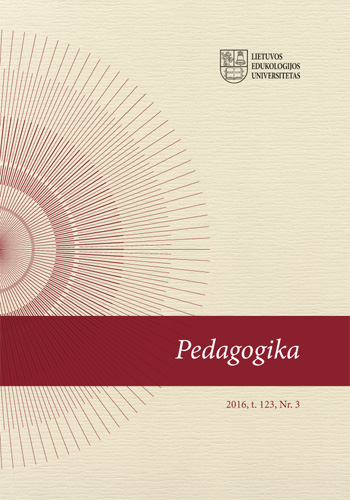Istorinio raštingumo ugdymas pradinėse klasėse: III–IV klasės mokinių istorinio šaltinio supratimo gebėjimai
Development of Historical Literacy: 3rd–4th Formers’ Abilities to Understand a Historical Source
Author(s): Aušra Žemgulienė, Nijolia BalcevičSubject(s): History, School education
Published by: Vytauto Didžiojo Universitetas
Keywords: teaching of history in primary classes; historical literacy; understanding of a historical source; primary education;
Summary/Abstract: The article analyses the problem of development of historical literacy in primary classes. Following the foreign theory and research, the article analyses which abilities to understand a historical source should be developed in primary forms. It is also discussed, which requirements for abilities to investigate and understand a historical source are imposed on primary learners in foreign countries (Cooper, 1995; 2006; 2012; Chapman, 2011; Lee, Ashby, 1995; Lee, 2005; Levstik 1993; Perikleous, Shemilt, 2011; Petri, 2014; Seixas 1996; 2006; Van Drie, Van Boxtel, 2007; Wineburg, 2010). The theoretical analysis allowed to notice that foreign researchers call for a transition from direct memorisation of information and data towards the development of an in-depth historical awareness among learners. In these times of information and rapid changes learning of history is expected to enable learners to think in an abstract manner freely using generalised secondary concepts such as changes, meaning, evidences, causes, empathy, etc. The research also discusses the specifics of integrated history teaching in the primary curriculum in Lithuania. The goal of the research: to identify what abilities of historical literacy are demonstrated by 3rd – 4th formers while working with historical sources. The objectives of the research: to analyse didactic approaches of historical literacy teaching primary learners to investigate and understand historical sources; to conduct research on 3rd–4th formers’ abilities to understand historical sources; to organise targeted educational activities for 4th formers and to identify changes in understanding of a historical source. The following research methods were used: analysis of scholarly literature on development of primary learners’ historical literacy; questionnaires of paper-and-pen assignments and quantitative and qualitative analysis of the obtained data; organisation of educational activities and repeated research on abilities. Considering the propositions of the foreign scientific theory and the specifics of the Lithuanian general curriculum of primary education, a 6 level matrix for data collection and processing was used for the analysis of the data. The conclusions of the research show that 3rd–4th formers are sufficiently successful in finding facts and data in direct and obviously presented historical information. They are insufficiently able to differentiate between the source information as a testimony of the context and a source as reliability of the evidence; to find information indirectly expressed in a source and to provide it as evidence describing the context of that time. Additional educational activities have slightly contributed to improvement of the 4th formers’ abilities to understand a historical source. They have approached a primary source as reliable evidence, have started applying the essential concepts related to understanding of a source, such as a primary source, an authentic letter because it is written in person. The research revealed that primary learners could achieve higher results if the aforesaid abilities were developed in a systematic way applying activities of active content creation and discovery. The research data revealed a number of contradictory moments. Firstly, the research disclosed gaps in learners’ reasoning skills. Despite the learners’ abilities to successfully find direct information in the source, a number of them are able to identify indirect information as well, their reasoning process as if “has got stuck” between differentiation of information as a testimony and reliable evidence. Secondly, the research results encouraged considerations about the issues related to content and quality of education. This is linked with specifics of primary education and integrated teaching of history themes during lessons of Surrounding World Learning. The curriculum does not provide for a precise definition of abilities to understand a historical source as learning outcomes and, thus, their development is not appropriate.
Journal: Pedagogika
- Issue Year: 123/2016
- Issue No: 3
- Page Range: 86-103
- Page Count: 18
- Language: Lithuanian

